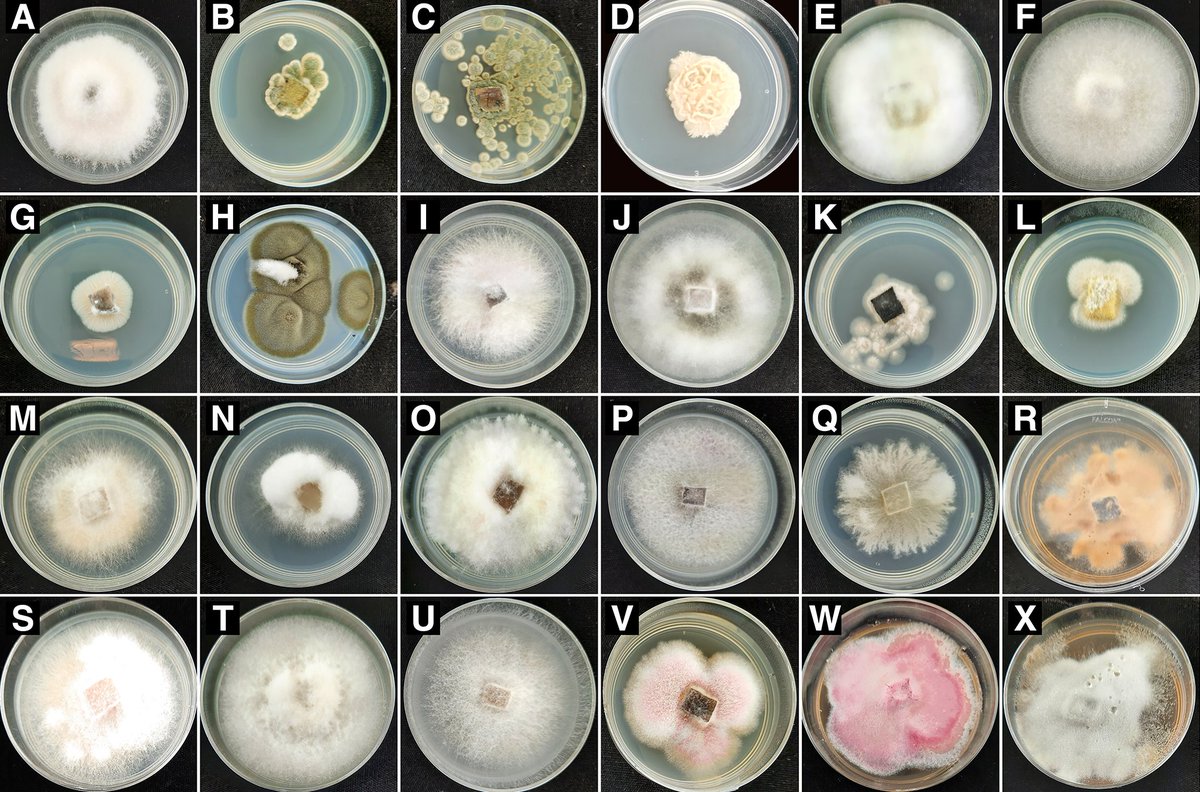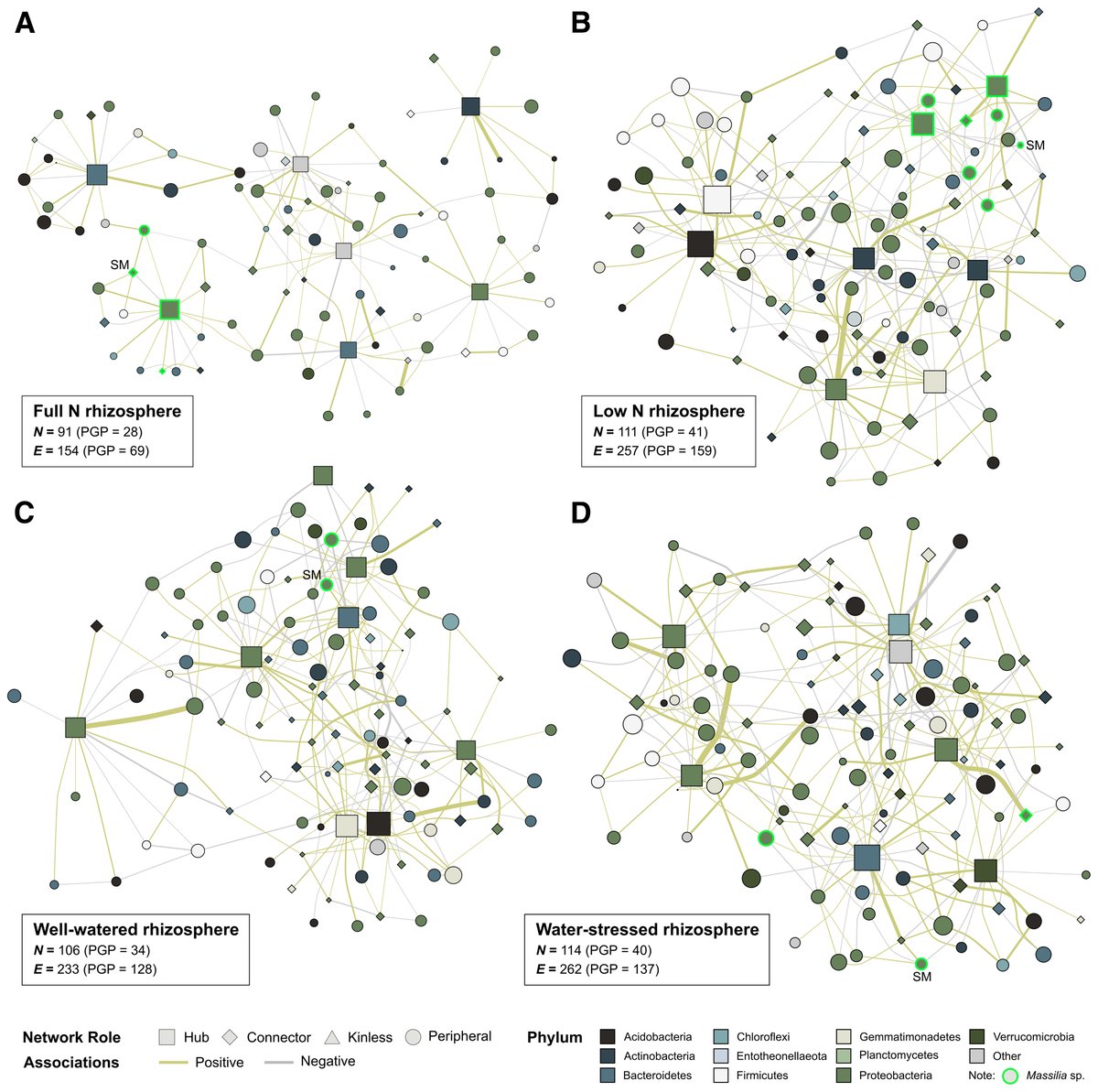
Phytobiomes Journal
@PhytobiomesJ
Followers
2K
Following
523
Statuses
685
An open access transdisciplinary journal of sustainable plant productivity. Established 2016.
St Paul, MN
Joined June 2016
Eastern hemlock faces threats from the invasive hemlock woolly adelgid. David Burke et al. examined the phyllosphere microbiomes of 2 susceptible North American hemlocks and 2 resistant Asian species to understand microbiome differences. @Sarah_Kyker
0
0
1
RT @resinsoaked: Excited to have this work highlighted! While we now have a clearer idea of the pathogens associated with pine needle disea…
0
1
0
Colton D. Meinecke et al. used DNA metabarcoding to analyze fungi associated with needle disease in loblolly pine (Pinus taeda) across the southeast U.S., identifying Lecanosticta acicola and others in the first regionwide outbreak study. 🌲@resinsoaked
0
0
2
Van Bach Lam et al. isolated indigenous bacteria from rice grown in acid sulfate soils with potential biocontrol activity against common fungal pathogens in Vietnam. @Heba_M_Ibrahim @BarbaraConinck
0
1
2
Classical approaches to plant disease diagnosis assume one pathogen per disease. Betsy A. Alford et al. reexamine Fusarium oxysporum’s presumed role in chickpea wilt/yellowing on Ethiopian smallholder farms. @UCDPlantPath Learn more:
0
1
2
SynCom studies need seed sterilization to ensure gnotobiotic conditions. Parnell et al. tested six protocols on two maize varieties, finding sterilization requirements depend on genotype and seed source. @maggieRwagner @NCState_PMB @NCSU_DEPP
0
0
6
Editor's Pick! In Western France, rapeseed suffers yield losses from Phelipanche ramosa. Lisa Martinez et al. reveal fungal-driven suppression in suppressive soils, with Berkeleyomyces inducing tubercle necrosis, reducing parasitism. @poulinlh
0
0
0
Check out this Editor's Pick—Open Access in Phytobiomes Journal! 🦠🧬🌱
Excited to share that our article, 'Persistence and Microbiome Modification in Rhizoctonia solani-Inoculated Rhizosphere Following Amendment with a Bacillus Biocontrol Agent,' has been selected as an Editor's Pick in Phytobiomes Journal @PhytobiomesJ!
0
3
4
Full article by Stephen J. Taerum et al. available now in Phytobiomes Journal volume 8, number 4 🦠🌱
Check out our new Phytobiomes first look paper led by Stephen Taerum! He observed that inoculating plants with a low number of rhizosphere protist isolates consistently established protist community.
0
0
2
RT @poulinlh: Comparative Analysis of Two Neighboring Conducive and Suppressive Soils Toward Plant Parasitism Caused by Phelipanche ramosa…
0
5
0
Just published! Blaise Jumbam et al. identified the core mycobiome for 8 cyst nematode species. In total, 744 species of fungi were found to be associated with cyst nematodes. @BlaiseJumbam @PNW_Nematology @PurdueAg
0
5
10
Just Published! Elle Barnes et al. analyzed the core bacterial and archaeal community of the high biomass bioenergy sorghum bicolor genotype, Grassl, grown under nitrogen and water stress. @EcoEvoElle @sgtringe @jgi
0
1
4
Just Published! Suni Anie Mathew et al. simulated the application of glyphosate-based herbicides and phosphate fertilizers in a field study. @_BenjaminFuchs @UniTurku @Eurecat_news @bioquimicaURV Learn more about the research:
0
1
1
Editor’s Pick! Research by Lindsey Becker and Marc Cubeta examines the impact of multigeneration postflowering drought stress on the wheat seed endophytic fungal community. @LindzBecker @NCSU_DEPP
0
2
10
Just published! 🍄 “Drought Influences the Structure, Diversity, and Functionality of the Fungal Community Inhabiting the Grapevine Xylem and Enhances the Abundance of Phaeomoniella chlamydospore” by C. Leal et al. @icvv_rioja @FagroUdelar @MENDELUcz
0
0
0
Editor’s Pick! This study by Darshi Banan et al. investigated how endophyte-mediated changes in Populus trichocarpa ‘Nisqually-1’ stomatal conductance and water use efficiency shift with time and scale in response to water deficit stress. @UW_SEFS
0
0
0
RT @OSUPlantPath: Congrats @Melanie_MedinaL on the 1st publication from her PhD research @msbenitezponce and H Lopez-Nicora #moretocome
0
1
0


















